Review: Ohlins’ TTX22M Coil Shock Delivers Grin-Inducing Performance
Öhlins' story began with motocross. It was with a rear shock, the TTX, that they made their entry into the MTB market, transferring the heritage, concept, and search for perfection over from motorized vehicles and crafting it into suspension products that aim to give maximum handling and outstanding feedback.
A few years have now passed since that first foray into the MTB world, and their current TTX22M still carries with it that desirability, not just from its distinctive exterior color but from its apparent performance.
It was time to put in some serious ride time on one of their units and see if this desirability was just vainly skin deep or if it was from something more special lurking inside.
TTX22M Shock Details
Tested: 205x60mm Trunnion C20 R40 & C10 R40 Tunes
Intended Use: Trail, Enduro & DH
Spring System: Coil
Damper System: TTX Twin Tube
Mounting: Trunnion (metric lengths only) or standard eyelet
Weight: 887g / 1.96lb (205x65mm Trunnion with 548lb x 67mm stroke spring)
Price: $695 USD / 695 € (Additional light springs $95 USD / 92 €)
More info: Öhlins MTB
Tested: 205x60mm Trunnion C20 R40 & C10 R40 Tunes
Intended Use: Trail, Enduro & DH
Spring System: Coil
Damper System: TTX Twin Tube
Mounting: Trunnion (metric lengths only) or standard eyelet
Weight: 887g / 1.96lb (205x65mm Trunnion with 548lb x 67mm stroke spring)
Price: $695 USD / 695 € (Additional light springs $95 USD / 92 €)
More info: Öhlins MTB
The signature gold color is instantly recognizable as Ohlins.
Function, Details & Features
In the box you get the damper unit, spring collar and C-clip, eyelet bushings, a spring, and the manual.
A coil spring is only one step up in engineering from a leaf spring, but packages the energy-storing far more efficiently wound around the damping unit. Öhlins springs are incremented in 4Nm steps, which is 23lb in imperial. Original Öhlins springs were carrying a bit of timber, or metal to be exact. But since then they’ve ditched between 25-30% of the weight with their new light springs. For reference, the 548lbs spring in 67mm stroke we used most in the testing weighs in at 406g.
There’s the usual spring collar used for attaching the spring to the damper, but most have a C shape to pass the collar around the damper shaft. The TTX22M’s spring collar has no split in it and is held to the eyelet of the shock via a steel c-clip. This means there’s no potential gap in support between the collar and the spring. It is a touch fiddlier than the conventional system, but ensures proper performance no matter the spring orientation. Installing the spring requires you to remove the rebound adjuster, this is a bit annoying but thankfully is done very infrequently. There’s a 2.5mm Allen key bolt holding it in and a nice solid key way between the small adjuster and the shock.
At the other end of the spring the threaded collar, used to preload, contains two small nylon screws to stop the collar from unthreading as the spring compresses and returns. This twisting motion can sometimes loosen the threaded collar, leaving you with a bike that sounds like a bag of spanners. But the Öhlins system puts a stop to this.
The body of the damper is protected from spring rub by a plastic guard which sits at a slightly proud diameter in relation to the rest of the body.
Spring installation and swaps require removal of the rebound adjuster. Once the spring collar is on, the spring isn't going anywhere.
Around the damper shaft sits the bottom out bumper, where it nestles into place down in the eyelet. Öhlins use two different lengths of bumper dependent upon the shock stroke, leverage ratio and progressivity of the bike it will be on. They also chose a different route for changing the stroke for a certain shock length to ensure that the characteristics from the bottom out bumper remain the same for all available shock strokes in a fixed eye to eye.
Damper Unit
Öhlins has been working with twin tube damping architecture for longer than most across the spectrum of genres that they offer products for. Twin tube is as simple as it sounds, with two tubes housed inside each other providing a circulation of oil from in front of the piston to behind and vice versa as the shock compresses and rebounds. The idea behind this concept is to remove any risk of cavitation (a rapid change in pressure that can cause the formation of vapor filled voids, resulting in an inconsistent fluid properties). The experience Öhlins have with this layout means they can precisely manage the pressures over the piston, keeping them within a range that ensures performance.
The TTX22M utilises bleed valves (1) and shim valves (2).
The main piston houses compression and rebound shim stacks and bleed valves, while the compression adjuster in the neck of the shock has a compression-only shim stack and bleed valves.
The damping force in the shock is produced from the increase in pressure in front of the piston as it moves through the oil. There is a pressure drop on the other side of the piston, but that’s not where the damping force comes from. Öhlins connect the nitrogen gas pressure in the reservoir to the low-pressure side of the piston to avoid cavitation. By the use of check valves, they can connect this gas pressure in both compression and rebound strokes.
This is the theory, but in a dynamic situation there will be a lag in the valve response and oil transportation due to flex. Fascinatingly, I’ve had oil described to me as a sponge. There’s an inherent delay in the oil answering your demands. Öhlins however say that with their twin tube design they can tune their shocks very well with their small adjuster click ranges while still keeping their pressures within a window that ensures proper performance.
Compression (3) and rebound (4) flow through the twin tube damper design.
When the shock is compressed the oil inside has three different “escape routes”: through the piston compression shims, through the compression adjuster bleed valve and through the compression adjuster shims. At any compression speed there will be movement through all these routes but at different shaft speeds the percentage split between the three escape routes changes. At lower shaft speeds there’s a higher percentage going through the bleed valves. Conversely, at higher shafts speeds the shims take more care of the oil flow. The oil volume displaced by the shock shaft entering the body flows through the compression valve and compresses a bladder inside the reservoir and pushes against the nitrogen gas.
When the shock is extending, or rebounding, the check valve closes and directs all oil flow through the main piston and the rebound adjuster bleed valve and shims. The oil that was displaced by the shock shaft, and was contained in the reservoir is now pushed back into the main oil volume by the gas pressure.
The use of a bladder in the reservoir reduces the number of pistons constantly moving back and forth, and so drops the internal friction. Öhlins use nitrogen gas due to its more stable characteristics with temperature change.
Where things get really mind-bending is in how Öhlins describe the use of a turbulent flow of oil to maintain a stable pressure drop across their valves despite changes in temperature. As oil temperatures change the viscosity also varies: the hotter the oil, the thinner it is. With the pressure drop across a valve in a turbulent flow of oil not being sensitive to viscosity changes they maintain a more stable damping force than if there was a laminar flow. It takes a fair bit of brain cog turning, but these insights into the very depths of their suspension help explain how they apparently achieve such high levels of performance.
Easier to understand is the use of the different expansion rates of steel and aluminum to allow the rebound damping needle to adjust its length, and so the amount of damping, as the shock changes temperature. Depending on where the rebound is set in the clicks, this change can be up to half a click of rebound adjustment.
Öhlins recognize the vast variety of suspension designs and that not one setup can be used for all. Having shims and valves as an integral part of their design enables them to offer a vast array of tunes to cater for different leverage ratios, progressivities, anti-squat levels and desired pedalling performance.
Ohlins has a vast settings bank to ensure the product works best for you on your bike.
There’s a huge settings bank available to Öhlins to ensure that the end user finds the correct spring rates and damping tunes for them on their bike. What good is the best suspension in the world if it’s not set up properly? This vast array of settings are available to all service centers too.
Bikes are, simply put, a balance of compromises, so if your bike does have a bit of progressivity, you’ll have less compromise between bottom-out support and bump absorption. That said, Öhlins can achieve different types of damping curves to get the desired function dependent on the leverage ratio and so can be used on a huge variety of bikes and riding styles.
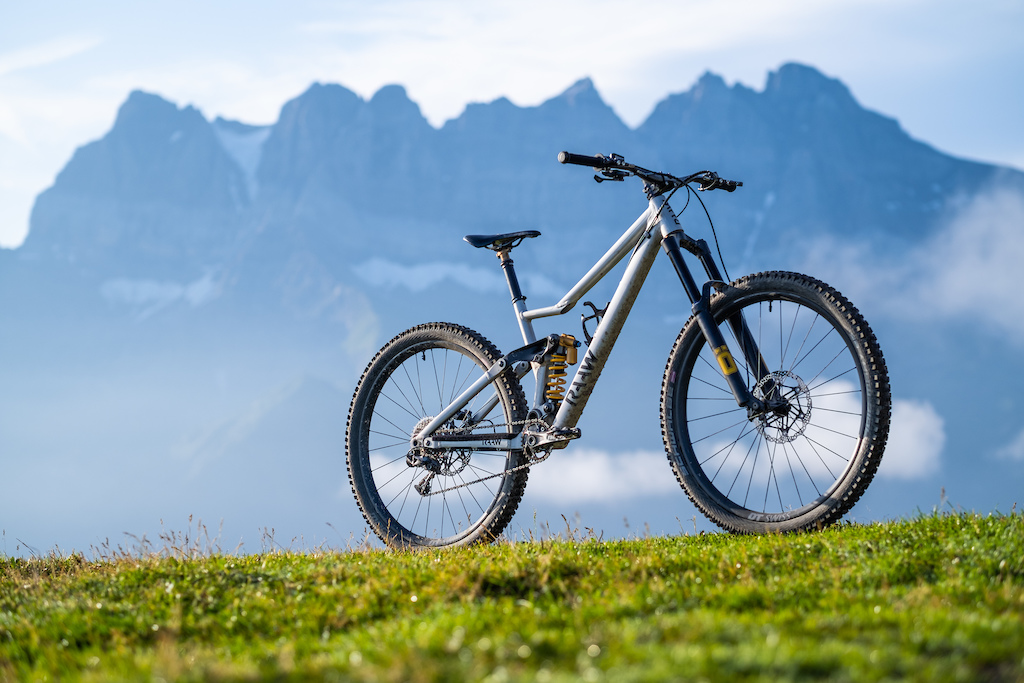
Our test bike was the RAAW Madonna
Setup
Öhlins has an online performance suspension guide to not only help setup on purchased products, but also find the right products for your bike. Inputting your bike brand, model, rider weight (all kitted up) and preferred sag percentage will output a complete list of the products available and advised for your bike with recommended setup numbers to get you in the ball park as fast as possible.
For my 75kg weight I went through a couple of springs to get up the 25% sag I was after on the RAAW Madonna, settling on a 548lbs spring.
The Madonna has just over 20% progression from a starting ratio of 2.93 down to an ending ratio of 2.33. It’s a smooth leverage ratio curve, with no roller coaster business going on, meaning that the shock could be tested without the need to be backed into a corner with tuning just to account for the bike’s suspension nuances.
Öhlins has an online performance suspension guide to not only help setup on purchased products, but also find the right products for your bike. Inputting your bike brand, model, rider weight (all kitted up) and preferred sag percentage will output a complete list of the products available and advised for your bike with recommended setup numbers to get you in the ball park as fast as possible.
For my 75kg weight I went through a couple of springs to get up the 25% sag I was after on the RAAW Madonna, settling on a 548lbs spring.
The Madonna has just over 20% progression from a starting ratio of 2.93 down to an ending ratio of 2.33. It’s a smooth leverage ratio curve, with no roller coaster business going on, meaning that the shock could be tested without the need to be backed into a corner with tuning just to account for the bike’s suspension nuances.
Dan Roberts // Technical Contributor
Age: 32
Location: Champéry, Switzerland
Height: 188cm (6'2”)
Weight: 75kg (165 lbs)
Industry affiliations / sponsors: Garage Bike Project, former engineer at Scott Sports
Instagram: @le_crusher
Test Locations: Champéry, Morgins, Bex, Pila/Aosta, Châtel, Torgon
Age: 32
Location: Champéry, Switzerland
Height: 188cm (6'2”)
Weight: 75kg (165 lbs)
Industry affiliations / sponsors: Garage Bike Project, former engineer at Scott Sports
Instagram: @le_crusher
Test Locations: Champéry, Morgins, Bex, Pila/Aosta, Châtel, Torgon
The black high-speed adjuster surrounds the blue low-speed adjuster. Rebound adjuster is at the other end of the shock.
Öhlins choose to use fewer adjuster clicks than some of the competition. While not only reducing the risk of landing on a poor setup it also means that each adjuster has a perceivable change on the bike. The rebound adjuster has 6 clicks, low speed compression adjuster has 18 and the high-speed compression adjuster has three settings. On everything but their longest DH length shocks this high-speed adjuster has two setting for normal riding conditions and the third is a platform for long smooth climbs. For the DH shocks this third setting is a firmest compression setting. All the clicks of the adjusters are nicely indented and easily felt and heard, meaning it’s easy to know where you are in the range or how much you just changed.
Performance
One thing that was very noticeable from bouncing around was the change in attitude that the high-speed adjuster made to the complete bike’s compression. You could easily shift the bias of the bike’s compression from the front, through equal to biased towards the rear. As was described to me by a good friend, it’s more of a high-speed zone selector, something that would later come in handy in the varying terrain that we used to test the shock on.
Some people take it easy on the first venture out with a new product, and that works just grand for some people. Alternatively, diving straight in at the deep end seems to immediately show if a product is up to party or whether it prefers a quiet night in. Given that I was conducting a test, time was precious, so I shot off up the lift to the DH trails of Champéry to don my Speedo and goggles and plunge head first into the very, very deep end.
With some other suspension brands a few clicks are needed to provide enough of a perceivable change to know if you’re heading in the right direction. I’m no Loris or Greg and haven’t fine-tuned my Jedi mind to feel half a click. But each and every single click on the Öhlins gives a change that you feel. Not to say that they’ve reduced the number of clicks for the same overall window, but out of the box your useable adjustable range is exactly that: useable.
Starting off with the compression fully open resulted in a bit too much chassis movement and so a bit less control than I required to really press on in the demanding steeps of the World Cup track. Again, worry never crept in about tuning direction, how many clicks or adjusting too much too quickly. Sag was bang on and had a good balance with bottom-out resistance and traction.
As seems to be a common trend, what feels good in the car park doesn’t quite find the right spot out on the trails. I slowed the rebound down to provide more control when the spring was returning all its energy, then added compression damping, both low and high speed, to control the shock's compression from the hits it encountered when my body weight was falling down onto the bike. And control is exactly what I got. Everything calmed down, and I could feel what was going on at the wheels as if I was casually dragging my finger tips on the ground like the 12 O’clock Boys.
Around the corner from Champéry, Morgins nestles quietly in the Portes du Soleil. Besides being one of the greatest places to ride a bike, it delivers tracks that were crafted into the mountain side to force bikes into situations that would uncover problems with suspension, geometry, setup and even your own riding mindset. If you can get a bike to handle the extremes that Morgins delivers then you’re onto a winner. Morgins’ demands on a bike are so much that it’s where I typically run harder and firmer setups. And the little TTX22M bloody relished in these demands.
Its tracks are generally a bit less steep compared to Champéry, and so I could move to zone two for the high speed and added a bunch more low speed to alter the attitude of the bike and provide more support all round while still not having so much damping that it undesirably kicks back.
The TTX22M is soft when you need it to be, and hard when you need that. Over small inputs and bumps it provides buttery smoothness. Then when the energy from the inputs builds, so does the creamy support. With knowledge of what was coming up on the trails, I found myself adding or removing a click of damping here and there to fine tune the bike for sections of trail. The adjustable range is so useable, and you know exactly the feeling that will be generated from each click that you can fiddle around.
Transitioning to the other end of the spectrum, and venturing out to the glorious ribbons of single trails that infest the forests and high alpine fields of the Alpes demand a drastically different setup, to which the Öhlins shock obliged. Compression settings were softened, allowing more margin for error on the narrower and less man-made trails, especially when riding them blind. Like Öhlins mention, on mellower rides a less damped setup feels nicer, but it never felt any less controlled and predictable.
The off the beaten path trails around Châtel, Pila/Aosta and Bex all delivered a more natural experience but individually brought their own nuances. Châtel had janky, rock filled, narrow trails that needed a bit of trials blended with smooth wheel placement. Bex had steeps galore where if you’re on the brakes or not, you’re doing the same speed, linked together with root-filled off-camber goodness. Pila and Aosta dished up rocks and deep dust that covered the big hits with a layer of sketch.
In every situation, the shock had my back. I could just let it go about its business and focus on the job in hand. It provided predictability and control, suppleness and support and never once got its knickers in a twist or felt like it was getting flustered. All the while delivering undiluted information of what was going on at the rear contact patch.
Final Setups
Flat out hard charging (e.g. Morgins): 548lb spring, 0 R, 0 LSC and HSC setting 2.
Steep and demanding (e.g. Champéry): 548lb spring, 0 R, 0 LSC and HSC setting 1.
Steep natural riding (e.g. Bex): 548lb spring, 0 R, 4 LSC and HSC setting 1.
Rocky, rooty natural single track (e.g. off the beaten track Châtel, Pila/Aosta): 548lb spring, 0 R, 10 LSC and HSC setting 1.
These are just the shock settings that I ended up on. You should also adjust your fork accordingly to maintain a balance in the whole bike from front to rear.
Servicing
The TTX22M service interval is every 100 hours or annually and is advised to be done at an authorized Öhlins MTB service center. Suspension deterioration is slow and incremental and something that you generally don’t feel from ride to ride until you refresh all the seals and oil to discover a huge difference.
Öhlins service intervals are on a par with the competition and it’s easy to send all your suspension off at once to get it serviced to ensure a long lifetime of high performance.
Ohlins TTX22M compared to the Fox Factory DPX2.
How does it compare?
The RAAW Madonna we used as a test bike previously had a Fox Factory Float DPX2 fitted, which packs a deceptively large amount of party despite its small exterior looks. So much so that I actually prefer it to Fox’s other offerings.
While some may disagree with the comparison between this and the Öhlins TTX22M, they are both viable options for this type of bike and riding and both have had a long amount of time spent on them discovering their performance levels. Comparing apples to oranges is possible.
Before fitting the Öhlins, the Fox was delivering brilliant performance. Supple, supportive, and predictable. While seriously large impacts resulted in a hard bottom out, it did a grand job in aiding the Madonna chase down DH bikes.
But after fitting the Öhlins, things were taken up a peg or two in the performance stakes. It was just that bit more supple, in no large part due to the difference in spring, but also due to the damping filtering out small hits so well while maintaining a feeling at the contact patch. Deeper into the travel the build of support was more double cream compared to the Fox ‘s single cream and not once did the violent hard bottom out occur, no matter how hard you landed to flat. I still used all the available travel, though.
Weight difference between the two is substantial, but understandable, with the Fox weighing in at 460g less than the coil sprung Öhlins - a coil shock isn't going to be the way to go if you're counting grams.
The Öhlins is more expensive than the Fox, but the return on your extra cash investment is hugely backed up in the performance and durability. While the Fox DPX2 is a fantastic shock, cheaper and lighter, and one that I will continue to ride for quite some time to come, it’s with the addictive ride characteristics of the Swedish gold that I would side, just to repeatedly plaster a massive grin across my chops every time I swung a leg over my bike.
Issues
After over two months of throwing everything including the kitchen sink at it, I encountered a grand total of zero issues. Absolutely nothing. No leaks, wheezing, knackered oil, drops in performance. Nothing. Most of this ride time spent with the damping as firm as possible and in terrain that put demands on equipment like no other.
After full runs in the baking summer heat, there is heat build up in the shock, but it’s only noticeable to the touch and never encroached once into the performance of the shock, which stayed consistent no matter what the ambient or operating temperature was. A testament to the mind bendingly technical solutions that Öhlins employ on the inside of their dampers.
Pros
+ Outstanding suspension performance, up there as the best.
+ A proper useable adjustable range with each click giving meaningful change to the bike.
+ Ride and rider enhancing abilities.
Cons
- A bit fiddly for spring installation and swapping.
- More expensive than the competition.
Pinkbike's Take
PHOTOS: Gaëtan Rey
Author Info:
Must Read This Week
[UPDATED] Final Elite XC Results & Overall Standings from the Mairiporã XC World Cup 2024
41947 views
41947 views
Sign Up for the Pinkbike Newsletter - All the Biggest, Most Interesting Stories in your Inbox
PB Newsletter Signup




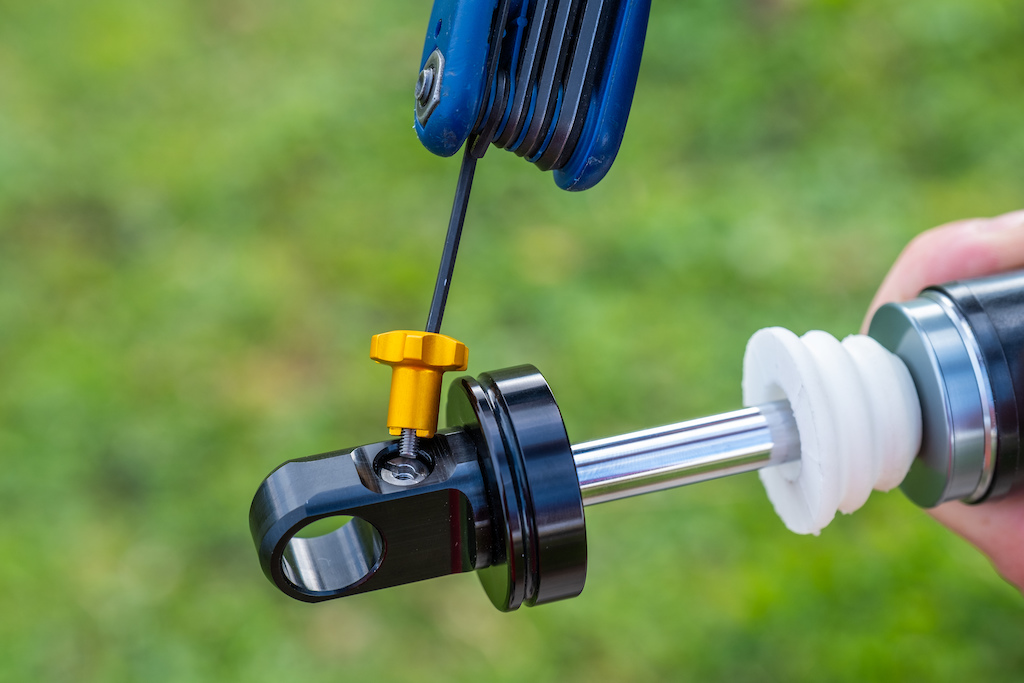
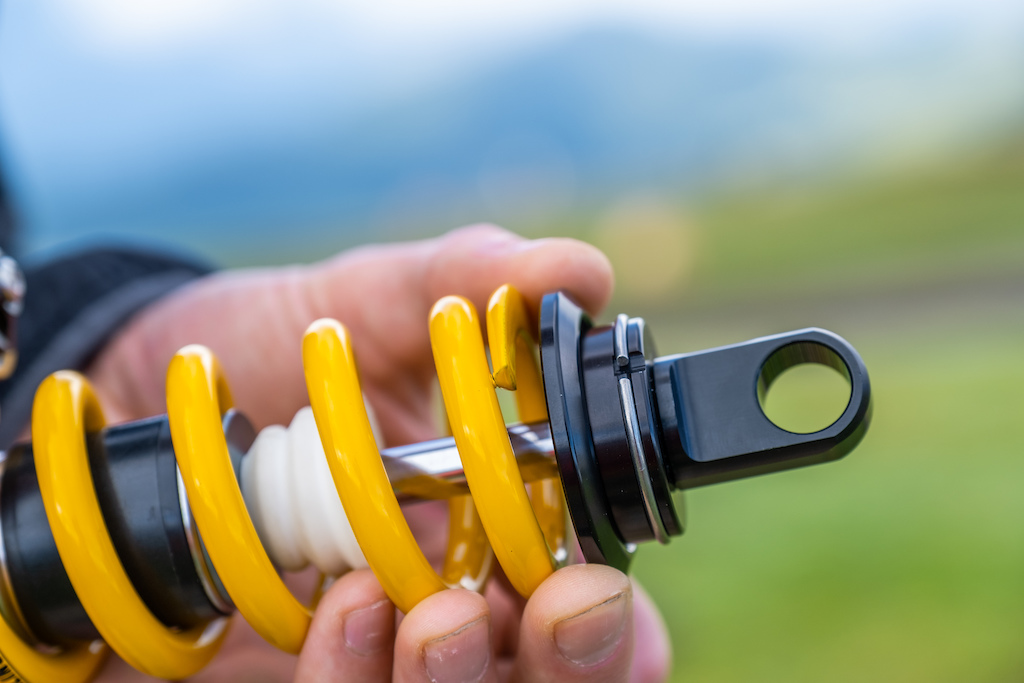
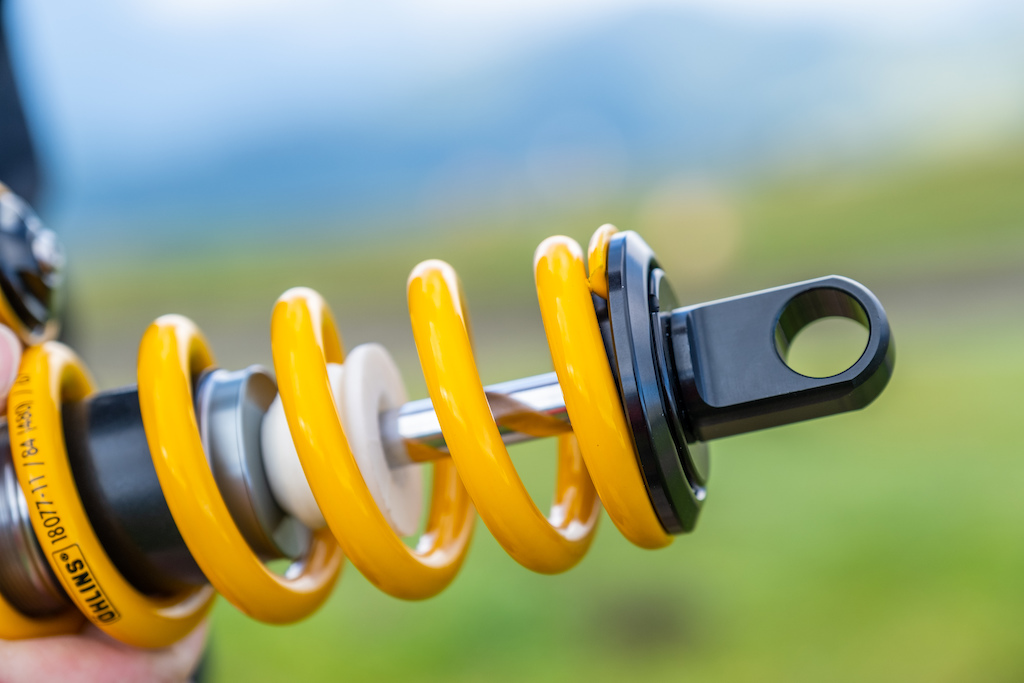
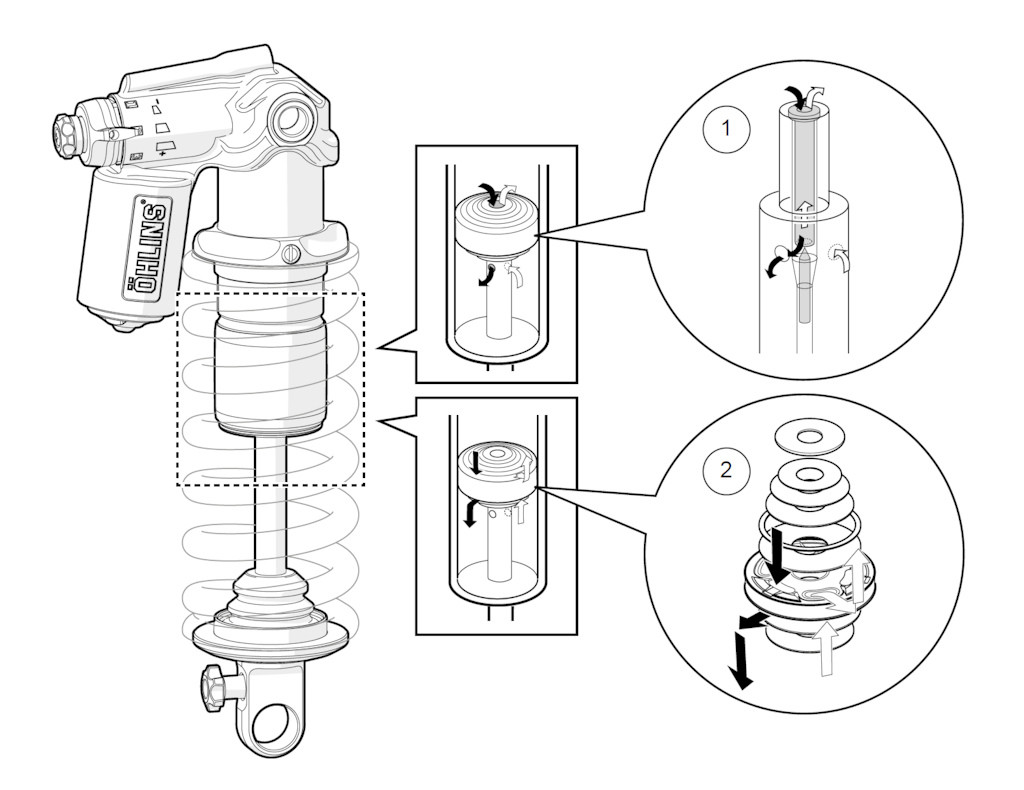

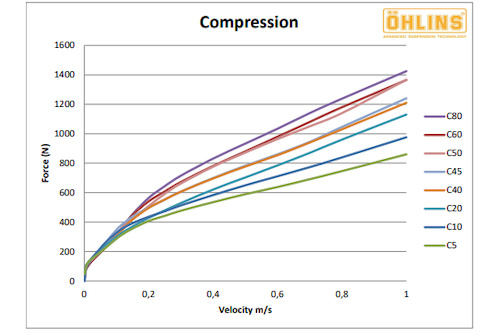
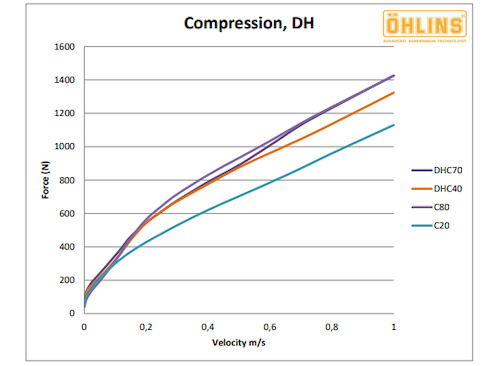

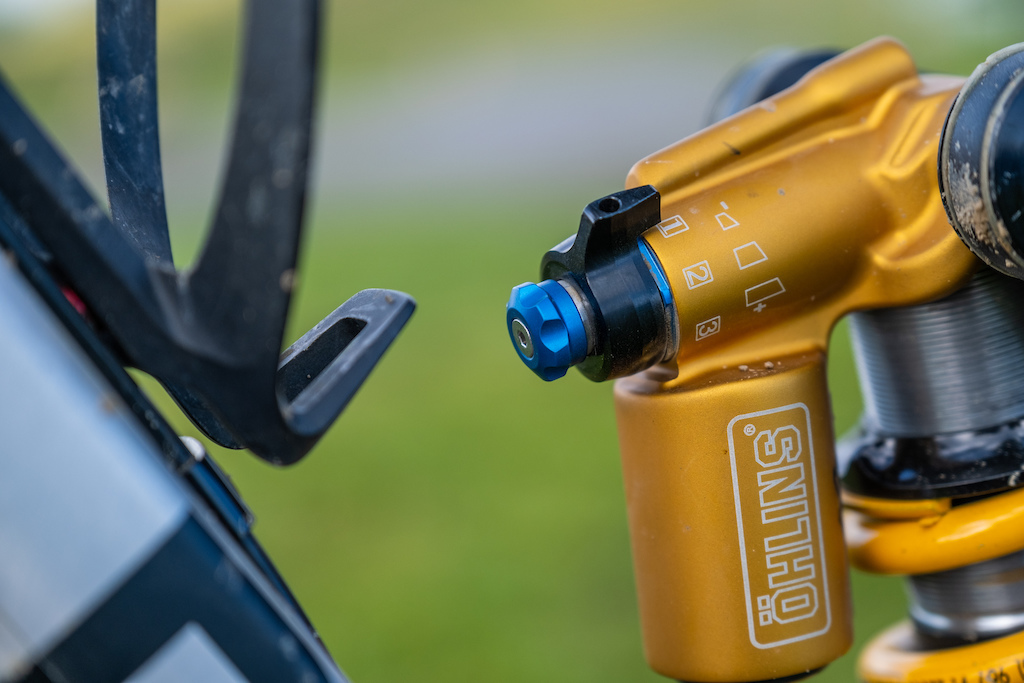

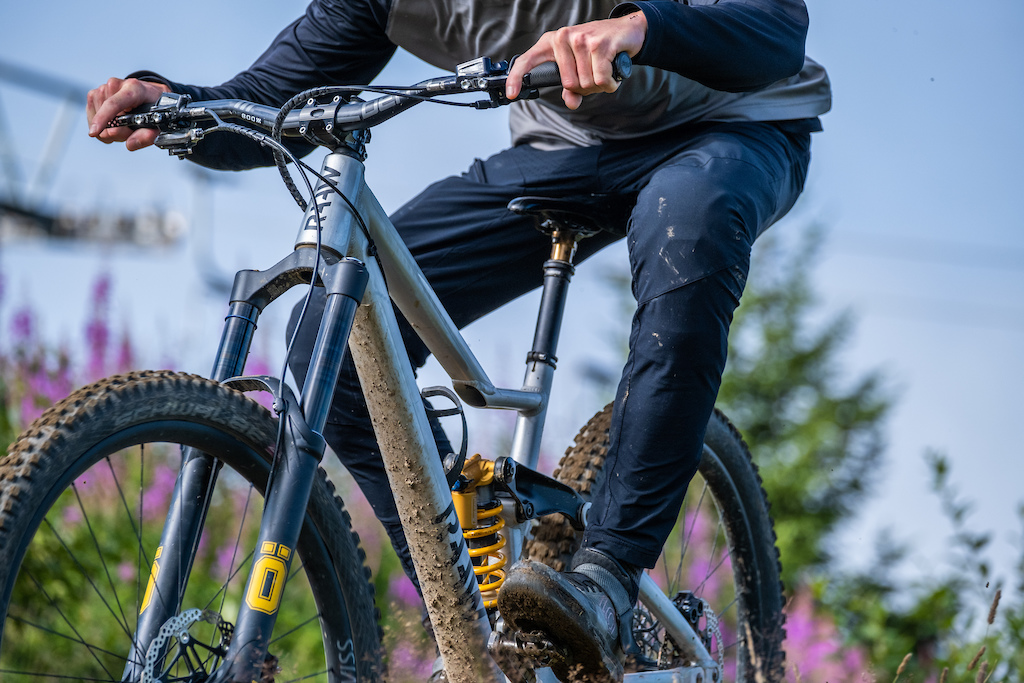
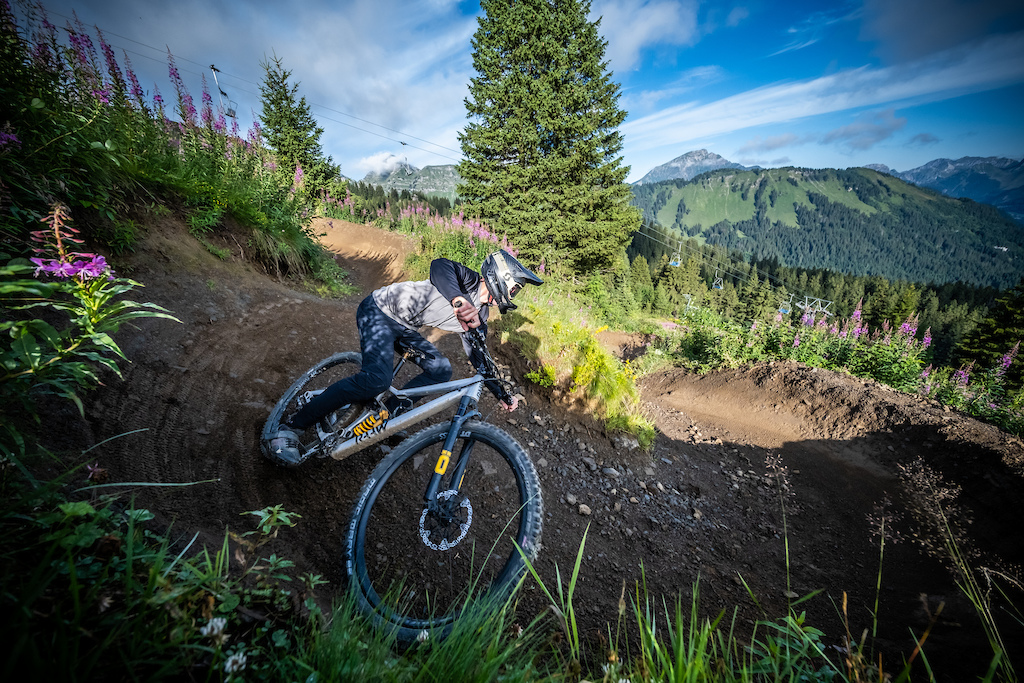
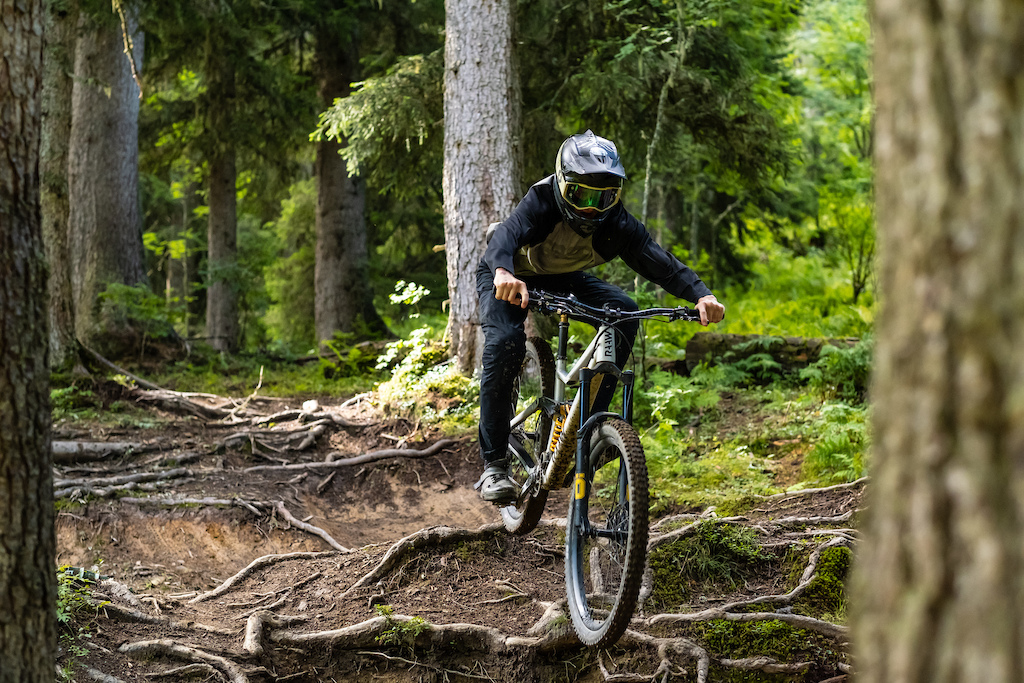

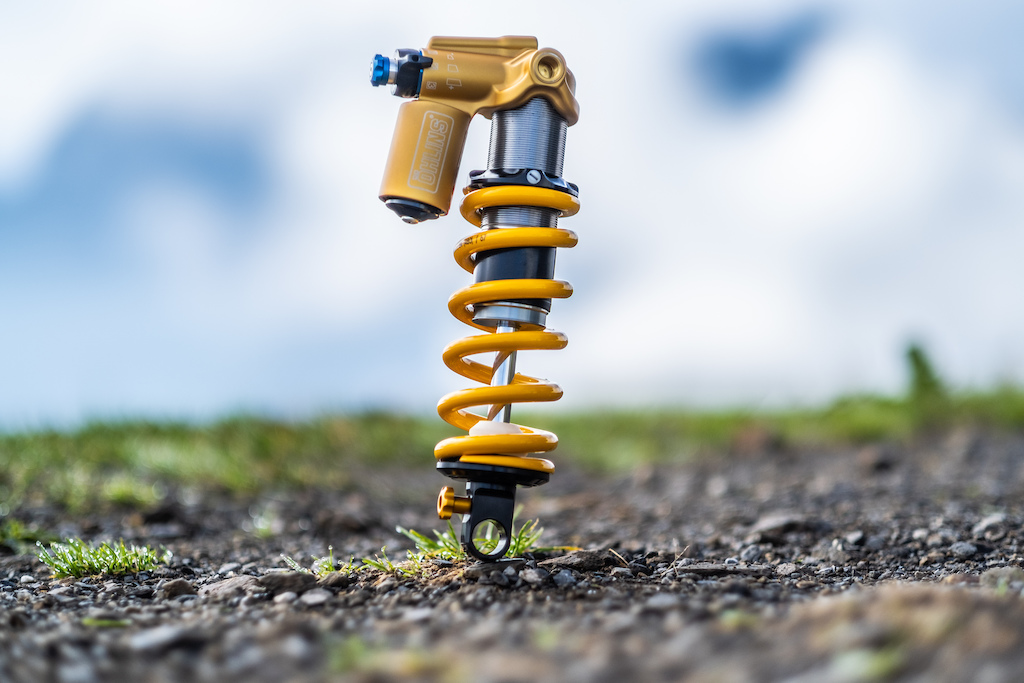
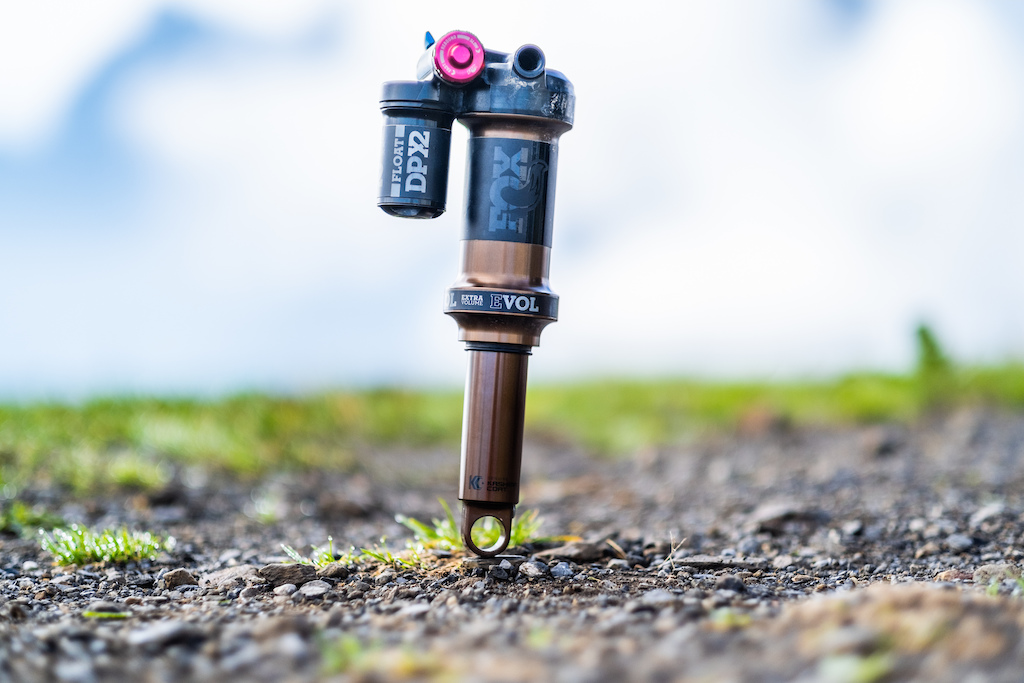
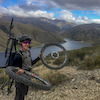
Also the Fast Fenix belongs on the list
The Avalanche Woodie is by maybe the best shock to have ever graced my suspension dyno.
However, it is expensive as f*ck, the mounting hardware is crap, support from avalanche for self service is non existant (I am a suspension center, I wont send it from Germany to the US for Service!), the adjusters are hard to reach or only adjustable by wrench.
So basically, its (depending on config) 2% better than a well tuned shock from the competition but such a pain in the ass with all its annoyances that it is, from my point of view, hard to recommend.
Still keep it in my "never sell" bin just to drool at it from time to time
Mounting hardware shouldn't be an issue for me as I already have it for my bike, but the adjustment dials point definitely figures, they don't look great
The fking shock costs now 1350€ in Europe and you get f*cked around afterwards too.
Thanks Push :-)
if you can find a used avvy for a good price and are able to service or have a tuner/servicer of your trust as in my case, it is a no brainer. sending both avvy and ttx to an official service-center comes same-same imho...
All the shocks are good, get one that you can get serviced and valved / adjusted locally.
Not lying, the Kage RC is an impressive piece of kit. I used to make fun with my customers by using one of these cheape "low budget" shocks and hand them out for testing, with proper valving these things rock!
I also have Evil Wreckoning and tuned my Fox RC4.
I removed the Boosvalve and replace the IFP with DVO bladder. Perfect fit by the way.
Re-valve the rebound shims and it now has 2 stages and compression has shims now has 3 stages shims stacks. Modify the HSC and its now a Mid-valve, it help the shock to stay high but very supportive on the beginning and ending stroke. It took me a while get all shims dialed and probably opened this shock more than 20x. I think with this Mods I have all the high end features of rear shock that exist todAy.
Swapped it for any Avy-tuned Marz Bomber CR and it's perfect. $250 for the shock on sale and about $300 for the tuning. Craig was pretty awesome also, despite a backlog and some other challenges.
I still stand by my point that 350€ for changing the shock is way too expensive when youre already spending 1350€ for the product in the first place.
Apparently there are a lot of 0 clicks which seems that the base setup isnt right.
Do you count clicks from closed or open?
If you are near the extreme setting of your shock, you setup is not right. You should always be in the middle to closer side of your clicks, but never in the most open or most closed.
On almost every shock the extreme settings just stray to far, for example on most dampers the couple most open clicks dont do anything (bleed diameter not changing yet) and the 2 most closed settings change the damping more than the 4 klicks before that.
If I had a customer telling me they run full closed or full open, I´d take the shock back for a revalve immediately.
On of the shelf products, lighter riders often need to run the compression fully or almost open.
In this case the tester is of very average weight so he should not need his rebound to be maxed out in any direction.
"To set the adjusters
The adjusters have a normal right hand thread.
Turn the adjuster clockwise to fully closed
position (position zero [0]). Then, turn counter
clockwise to open, and count the clicks until you
reach the recommended number of clicks."
Also, a single stack can normally accomodate a vast majority of of spring rates, some better, some worse.
One could even say the "straying" settings at the extremes of the adjuster range are useful for that purpose, the last klick to close basically shuts the rebound bleed port and makes the damping stiff as f*ck since there is no bypass to the shimstack.
If he had to run the adjuster way closed then the shock really was propably very much underdamped.
Always counted from fully closed. DT Swiss is the only manufacturer that I've come across to count from fully open.
I'd beg to differ that 0 click is an issue.
Morgins, where the shock was tested the most, warrants the firmest and most chassis controlled setup of anywhere I've ridden. It's an extreme, and the settings reflect this. 548lbs is a lot of spring too and I wouldn't want to go slower at all with the rebound.
For times when I was riding a bit frosty, it was easy to speed the rebound up a click, but then this needed to be adjusted when I'd pulled my head out my arse.
Also, there's the option to run the 525lbs and 502lbs springs to have different sag. 28% and 33% respectively. Both these options would then warrant a couple of clicks faster rebound, moving away from fully closed.
Essentially, the tracks and conditions that we tested on warranted an extreme of a setup, which you've spotted in the settings. But everything else other than that extreme would need less spring and less rebound damping. I was stoked that the Öhlins could deal so effortlessly with the extreme that we threw at it.
Hopefully that helps explain a little more.
Looking at a DHX2 or X2 upgrade on my current bike. TTX22 looks cool but way too expensive in Canada.
Good music too imho
I have wanted to fit a coil for a while now on my Rune, but the regressiveness of the frame has been stopping me. I had to put one large and one small token in the stock CCDB air with XV can in order to have decent sensitivity, support and to not bottom out...
I find this hard to believe being as the rebound was set to ‘0’ for all riding conditions.. hmmm
Granted all bikes and riders are different.
I’ll stick with my X2 for now, thx
Price and performance can match, but they do not nessecarily have to.
Marketing bullshit can inflate a price multiple 100%. It does not matter if we talk about forks, shocks or tyre inserts.
Take a look at rock shox "middle priced" offerings. They take a lyrik, rip out the good damper and put in a piece of crap, consider if they diminished the performance enough and called it a day. Sometimes they mess that logic up, like with those beautiful cheap and good working Kage RC shocks
Trust me, if anyone would have stuck a Ohlins Sticker on one of those and pulled up a load of marketing crap, people would have bought it for 1 Grand and pretended it was the second coming of christ.
The shock is more expensive than the competition, and it is a downside. But hopefully you read more than just the pro/con section and saw, quite unanimously, that the extra price is definitely worth it.
I'm trying to figure out proper spring rate. The S2 frame came with a 365# spring and I can get 30% sag with one turn of the preload ring. However, I have a spring rate chart from Specialized that says I should be on 434# spring for my weight (170lbs with gear).
Just wondering where others are on this.
There's a link that might help here www.tftuned.com/spring-calculator
or at some point Ohins may have updated their tuning help page to add in the new demo (the haven't yet) www.ohlins.com/performance-suspension-guide
Hoping that's at least a better staring point for you
MRP is selling some, but we don't know anything about the quality of their spring rates yet.
www.raceonlysprings.com/shop
I think the next big trend/innovation in Enduro riding is going to be progressive coils, as soon as someone cracks the manufacturing hurdle....
Its time a for a service, but at $400 CAD + Shipping to/from Suspensionwerx its hard to commit.
Too much hyperbolic language. I couldn’t get passed the “Öhlins begged someone to write a positive review gushing about our shock that no one uses” vibe.
It could be that there’s some legit criticism but it’s packaged in a bit too much sales pitch for me to take it seriously.